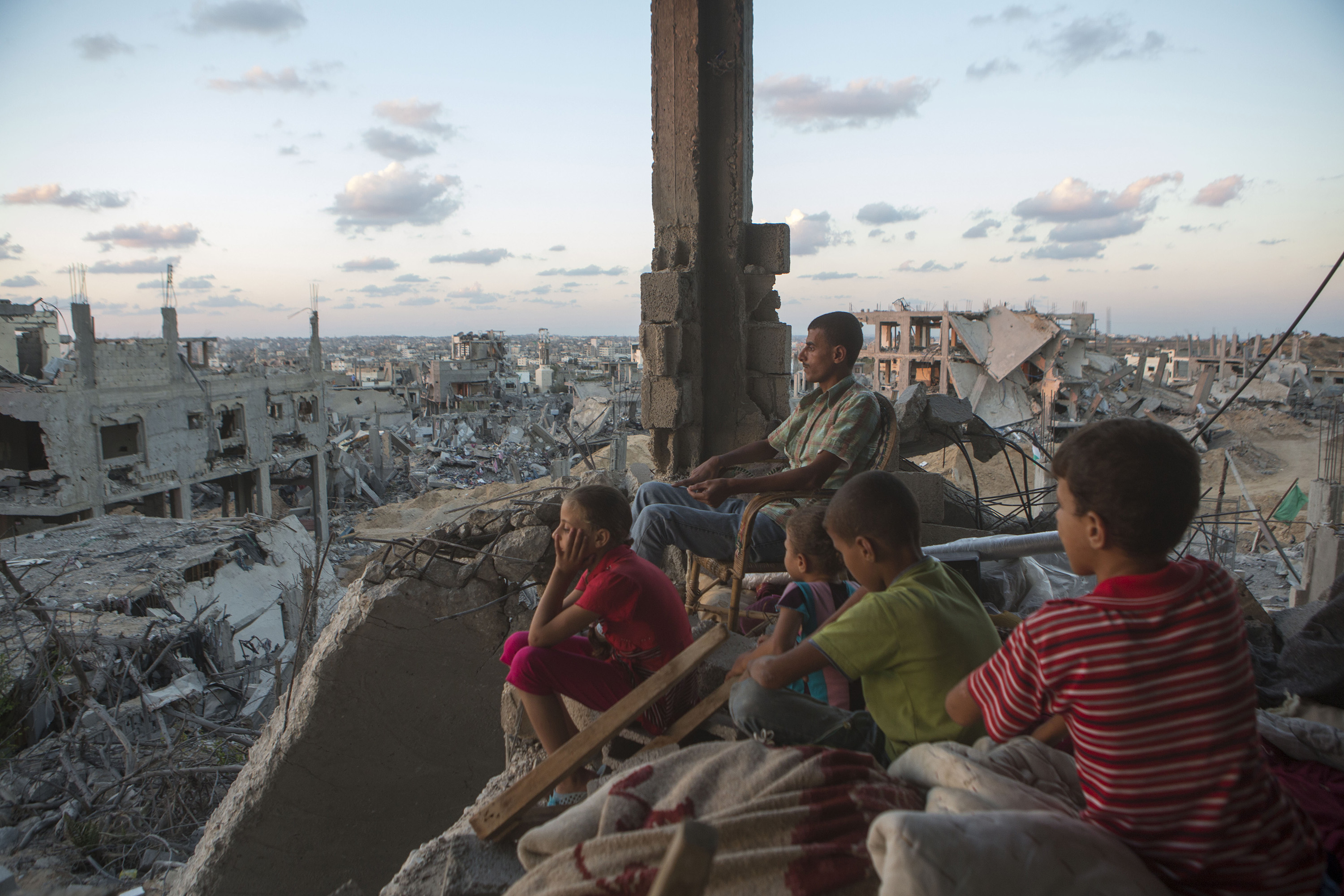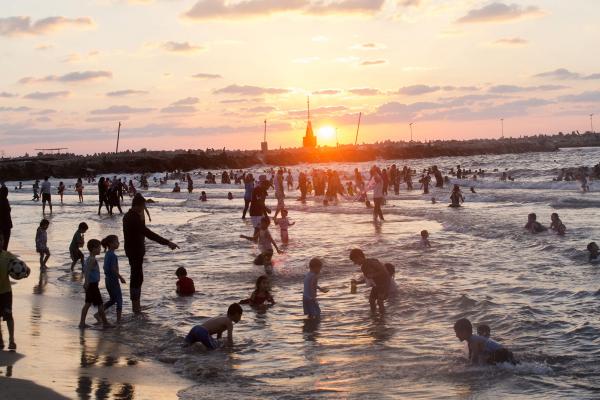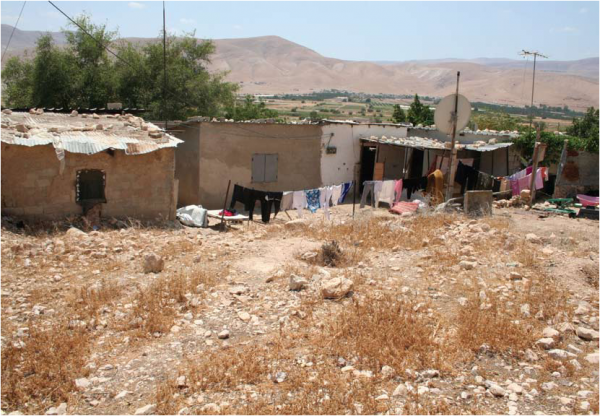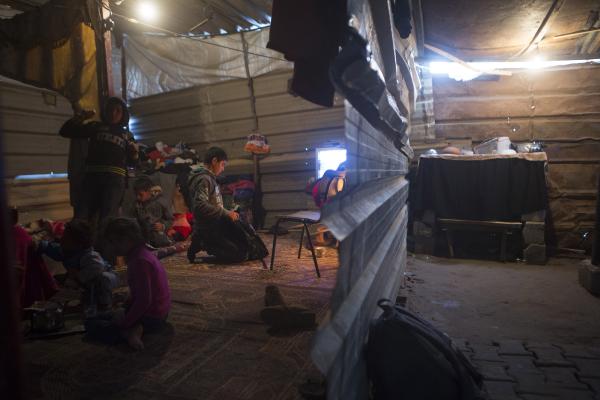This article was first published in June 2018. It was edited and updated on May 17, 2021.

Yet another large-scale Israeli military assault on Gaza is underway. Over the last week Israeli attacks on Gaza have killed at over 200 Palestinians, including at least 60 children, have injured more than 1,300 Palestinians, and have displaced tens of thousands. At least 10 Israelis, including one child have been killed. These numbers will continue to rise unless these attacks are stopped.
The U.S. government is backing Israel's actions which it has labeled as "self defense" and without change in policy the attacks will likely continue with dire consequences.
The dominant narrative put forward by Israeli and American leaders places Israel under threat from Gaza, and Israel claims that its current actions are responsive to Palestinian rocket fire and violence. This narrative is based on a complete distortion of the facts and must be challenged when it is trotted out by commentators and the media.
First, it is necessary to challenge the limited way in which violence is defined and discussed in the context of Palestine and Israel. Violence as most people see it involves a physical action. Rockets, shooting, and other forms of physical violence against individuals are what we measure and take into account as violence is discussed.
However, this misses the majority of the violence occurring in Palestine and Israel. Life for Palestinians is defined by legal and structural violence which denies their rights, limits opportunity, and costs lives.
In Gaza the most obvious form of structural violence is the blockade which was declared an illegal act of collective punishment by the UN and Red Cross. The blockade impacts every area of life for Palestinians in Gaza. It has devastated the economy, leaving over half of the population unemployed and creating poverty that leaves over 80% of the population dependent on international assistance to survive. The blockade blocks the import of basic medical supplies, denies travel permits to people seeking medical care outside of Gaza, results in cuts in electricity that negatively impact hospitals and other health facilities in Gaza, and is directly responsible for deaths. Blocked imports of materials needed to build, repair, and maintain basic water and electrical infrastructure leave much of the population without regular access to clean water and only limited electricity. The systematic denial of people’s basic rights is a form of violence.

The structural and legal violence faced by Palestinians isn’t limited to Gaza or even the occupied Palestinian territory. All Palestinians, regardless of location, face inequality and denial of rights based on their identity. Home demolition policies, restrictions on movement, arrest and detention without trial, destruction of property, different legal system for Palestinians and their settler neighbors, these are but a few of the ways that structural violence against Palestinians is manifest in the West Bank including East Jerusalem.
While Israel has justified these attacks on Gaza by pointing to the rockets fired into Israel from Gaza, those rockets were also fired in the context of an Israeli attack on worshipers at Al-Aqsa mosque that injured over 300 people, the threatened forced displacement of up to 2,000 Palestinians in Jerusalem, and other violence by Israeli soldiers and settlers over the last few weeks.
Inside 1948 Israel, the Palestinian population of the state also lives in a system defined by enforced inequality. The 2018 Nation State Law which defines Israel not as a state of its citizens but as a Jewish state codifies what has always been reality. The same law downgrades the status of the Arabic language in the state, allows for discriminatory community planning policies, and promotes the rights of Israeli’s Jewish citizens over the rights of Palestinians. It is this law and similar policies that convinced the Israeli and international human rights organizations Human Rights Watch, B'Tselem, and Yesh Din to recognize the situation in Israel and Palesetine as one of Apartheid.
In a situation of Apartheid where basic rights are systematically denied to Palestinians, where military occupation denies Palestinians their right to self-determination, and where the systems set up to control Palestinians are enforced through violence and state power, there must be an expectation that some Palestinians will respond through resort to violence. Indeed, international law allows Palestinians to resist occupation through resort to force.
Ending violence can’t come through a focus on the responsive violence of those resisting the denial of their basic rights. What must first be addressed is the structural and legal violence that systematically denies rights and destroys lives. This is particularly the case in Gaza where it must be stated clearly that a new attack and increased Israeli violence against a besieged population will not bring peace. History should make this clear.

Of course, there are those who will say that the systems of control discussed above are only in place because Palestinians are violent and must be controlled. In this line of reasoning the blockade of Gaza and any attacks on Gaza are the result of Palestinian actions. We are told that if Palestinians stopped firing rockets and digging tunnels Israel would lift the blockade.
Here again it is necessary to challenge the dominant narratives. The reality is that for over a decade rocket fire from Gaza has been limited whereas Israeli attacks on Gaza are a nearly daily occurrence. The scale of damage, destruction, and harm between Palestinian rockets and Israeli bombing and attacks also cannot be compared.
Outlining how the dominant narrative about Gaza rockets is wrong isn’t done to minimize the impact of any violence, but understanding the dynamics of what is happening is necessary if change is to occur.
In both Israel and the US rockets are the focus of attention. They are seen as the driver of conflict and the source of violence. They are not contextualized by Israeli actions before, during, and after rocket fire occurs. However, context is important because the reality is that violence emanating from Gaza is rare while Israeli attacks on Gaza are nearly a daily occurrence.
Outside of periods of defined escalation swhen rocket fire from Gaza increases there is little if any rocket fire from Gaza. In a Haaretz Article discussing the increase of rocket fire in 2018 as tentions rose at that time, it was noted that, according to the Israeli Defense Ministry, in 2015 a total of 21 rockets were fired from Gaza. In 2016 a total of 15 rockets were fired from Gaza. In 2017 a total of 35 rockets were fired from Gaza. Between January 1 and May 29 of 2018 only 10 rockets were fired from Gaza, with none fired during March, April, and the first weeks of May.
At the same time, according to the United Nations Office for the Coordination of Humanitarian Affairs (UN OCHA), in 2015, 2016, and 2017, Israel killed 64 Palestinians in Gaza, injured over 2,700, and carried out attacks on Gaza nearly every day. Between January 1, 2018 and March 26, 2018 the Israeli military entered the Gaza buffer zone nine times to destroy property and clear land. During the same period, the Israeli military opened fire in the Gaza buffer zone 181 times, killing 2 people and injuring 13.
According to UN OCHA, between January 4 and March 29, 2021 a total of 4 rockets were fired towards Israel from Gaza. None of the rockets caused any damage in Israel. During the same period, the Israeli military opened fire into Gaza on at least 168 occassions, carried out 12 land clearing invasions in Gaza, shelled Gaza once, and carried out 3 airstrikes on Gaza. Rockets from Gaza have come in the context of this ongoing violence against Gaza.
All of this also occurred within the context of the decade long Israeli blockade of Gaza which systematically denies Palestinians in Gaza their most basic rights.

Putting all of this out as this new attack on Gaza occurs is important because this isn’t a change in reality. This situation, where Israel regularly attacks Gaza without any attention given, has been the reality for most of the last 14 years. This was the situation before the Israeli attacks on Gaza in 2008, 2012, and 2014. However, in all of these instances Israeli narratives that focus on Palestinian violence as the driver of conflict have shaped reports in the media and by commentators.
Thus, in 2009 I wrote the following:
“According to the Israeli military, in the five months leading up to the June 2008 ceasefire with Hamas an average of 377 rockets and mortars per month were fired from Gaza into Israel. During the five-month period from June 18, 2008 when the cease fire came into effect until November 4, 2008 the number of rockets and mortars fired into Israel averaged only 7.5 per month. During October only 2 were fired into Israel. These rockets were not fired by Hamas but were rather fired by groups opposed to the ceasefire and determined to undermine the ceasefire. From the perspective of Hamas (and most Palestinians) the ceasefire was clearly respected.
However, the reduction of rocket fire into Israel resulted in no changes in Israeli policy towards Gaza. Military incursions into Gaza continued and resulted in 28 Palestinian deaths during the ceasefire period. The siege was not lifted and the humanitarian situation in Gaza continued to deteriorate with basic medical supplies unavailable and over 80% of the population remained dependent on food aid to survive. On November 4, 2008 Israeli ground forces carried out an attack in Gaza in which 6 Hamas members were killed and another Palestinian was killed the same day in an Israeli aerial attack. In response to these actions Hamas fired 35 rockets into Israel, after which Israel responded with further attacks. From this date back and forth violence escalated until the beginning of “Operation Cast Lead” on December 27, 2008.”
In 2012 after the next attack on Gaza I wrote this,
“After the end of Cast Lead another Cease Fire went into effect and was largely respected by Palestinians in Gaza. For example, of the grad rockets, homemade rockets, and mortars fired by Palestinians between January 1st and November 1st 2012, approximately 70% were fired during three distinct periods of escalation in March, June, and late October. Each of these escalations correlates with an assassination/killing, incursion, or other Israeli military action. Only a small percentage of the other rockets and mortars that were fired during 2012 were fired in isolation from Israeli military actions in Gaza.
During that same time period Israel carried out military invasions of Gaza several times a week. These invasions involve the entry of Israeli tanks, armored personnel carriers, jeeps, and ground forces into Gaza where they destroy agricultural property, destroy homes, attack armed groups, arrest wanted individuals, and attack civilian targets. In addition to these invasions, Israel airstrikes, naval shelling/fire, and shelling and firing from ground forces target locations in Gaza several times a week.
During the period between January 1st and November 6th 2012, 19 Israelis were injured by Palestinian attacks originating from Gaza. During the same period 71 Palestinians were killed and over 300 injured by Israeli attacks on Gaza.”
Finally, in 2014 I wrote this,
“Following the end of the November 2012 conflict between the Israeli military and Hamas, a ceasefire went into effect whereby Hamas agreed to refrain from firing rockets and Israel agreed to lift the siege. From the signing of that ceasefire until June 2014 Hamas fired no rockets into Israel. It also set up a special police unit to stop the firing of rockets by other groups. This decreased rocket and mortar fire from Gaza to record low levels in 2013. In addition, no Israelis were killed or injured by rockets fired from Gaza during 2013. During the same period Israel continued regular attacks on Gaza and did nothing to end its siege. Hamas rocket fire only resumed in 2014 after Israel carried out several attacks that killed Hamas operatives and civilians in Gaza and began a systematic attack on Hamas in the West Bank.”
As Israel carries out another attack on Gaza, it isn’t Palestinian actions that are driving that attack. An Israeli attack on Gaza is an inevitable next step in Israel’s failed policy of isolation against Gaza. To stop this cycle of repeated large Israeli attacks on Gaza, the Israeli blockade and daily Israeli violence against Gaza must end and the rights of Palestinians must be respected. The structural violence of occupation and enforced inequality must end.
Increased military force will not end rocket fire and violence from Gaza. Rather, ending violence by armed Palestinian groups requires engagement with them, realizing equality for Palestinians, as well as ending Israeli violence, the Israeli blockade of Gaza, and the occupation of the Palestinian territory.


